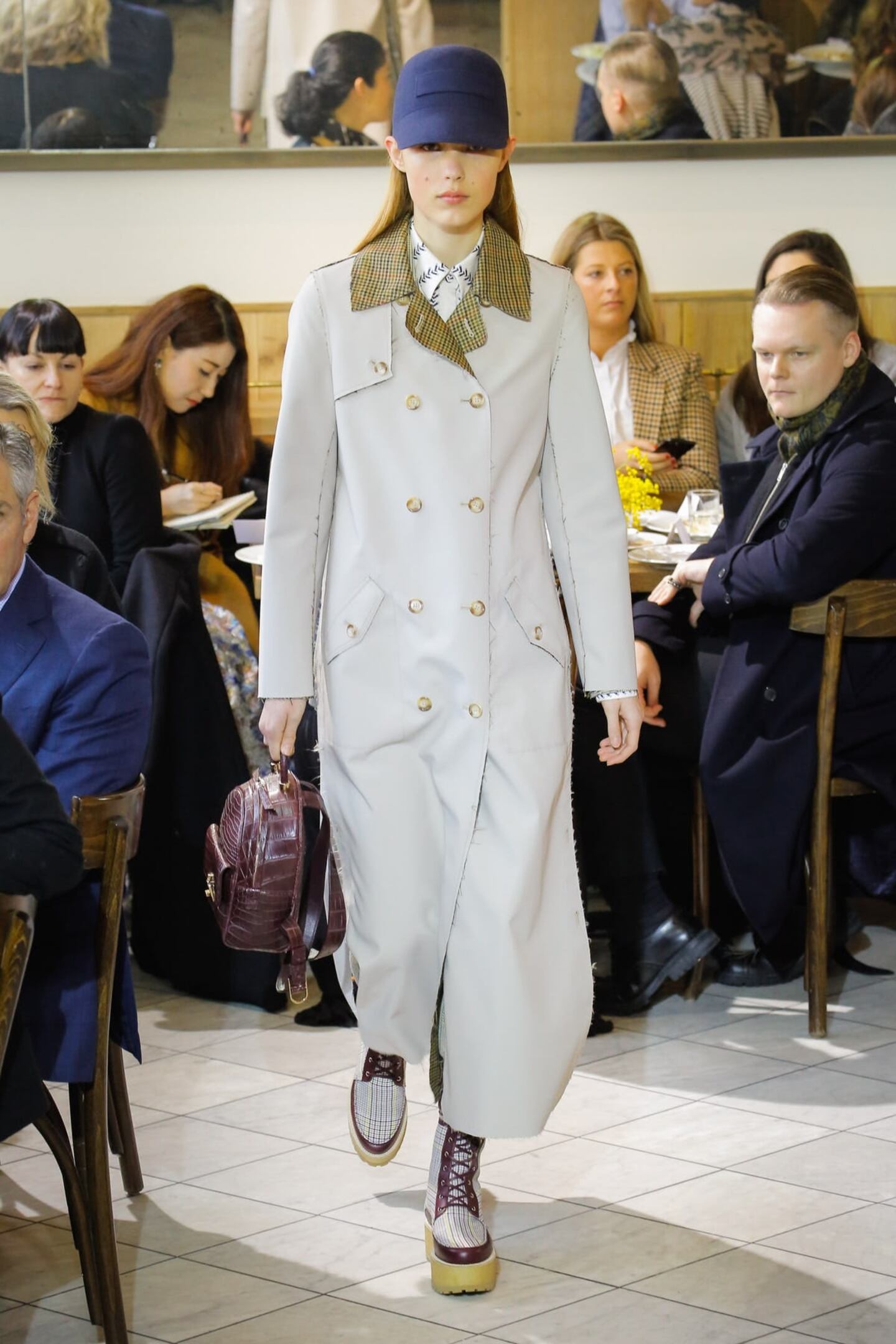
The Business of Fashion
Agenda-setting intelligence, analysis and advice for the global fashion community.

Agenda-setting intelligence, analysis and advice for the global fashion community.

NEW YORK, United States — For her Autumn/Winter 2018 runway show, Gabriela Hearst invited a small crowd to fill the 106 seats at Café Altro Paradiso, a heavy-on-pasta, high-on-style joint from Ignacio Mattos, the celebrated chef and owner who, like Hearst, was born in Uruguay. For lunch, she asked him to serve Malfatti ricotta dumplings.
The intimacy of the affair reflected Hearst’s niche status. Her clothes are very expensive (cashmere smoking jackets, hand-worked stone-on-wood belt buckles), made with very expensive fabrics (Japanese sponge cashmere, silk shantung) and produced in very expensive factories (Italy). One could argue that those garments, muted in colour and subtle in silhouette, are more compelling up close than on the runway. In order to marvel, each yolked back or mint-and-salmon pinstripe needs to be examined. For instance, at a preview, she showed off a cashmere-and-silk blend woven to look like shearling. It felt the way one wishes shearling felt. “Cashmere is the new fur,” said Hearst, who has committed to developing more sustainable wool on her own sheep farm. What a life.
But while the customer for her ready-to-wear collection might be narrow and go deep (you can see one woman buying an entire morning coffee-to-evening nightcap wardrobe here), this label could well be transformed into a legitimate lifestyle brand with the right execution.
To start, her surname has heritage and she's quick to embrace it. While visiting the Met's costume archives, she found a suit belonging to her late mother-in-law, the newspaper columnist Austine McDonnell Hearst. The collection featured multiple odes to her, including a silk illustrated with tiny riding boots in a herringbone pattern — inspired by one of McDonnell Hearst's own scarves — and another printed with Hearst-owned newspapers then overlaid with red Swarovski-crystal roses.
The details — from the geometric stone hardware built into the latch of a camera bag to the silk fringe on an evening anorak — lend themselves so easily to homeware, too. The possibilities may not be endless, but they are there.
From where aspirational customers are spending to Kering’s challenges and Richemont’s fashion revival, BoF’s editor-in-chief shares key takeaways from conversations with industry insiders in London, Milan and Paris.
BoF editor-at-large Tim Blanks and Imran Amed, BoF founder and editor-in-chief, look back at the key moments of fashion month, from Seán McGirr’s debut at Alexander McQueen to Chemena Kamali’s first collection for Chloé.
Anthony Vaccarello staged a surprise show to launch a collection of gorgeously languid men’s tailoring, writes Tim Blanks.
BoF’s editors pick the best shows of the Autumn/Winter 2024 season.